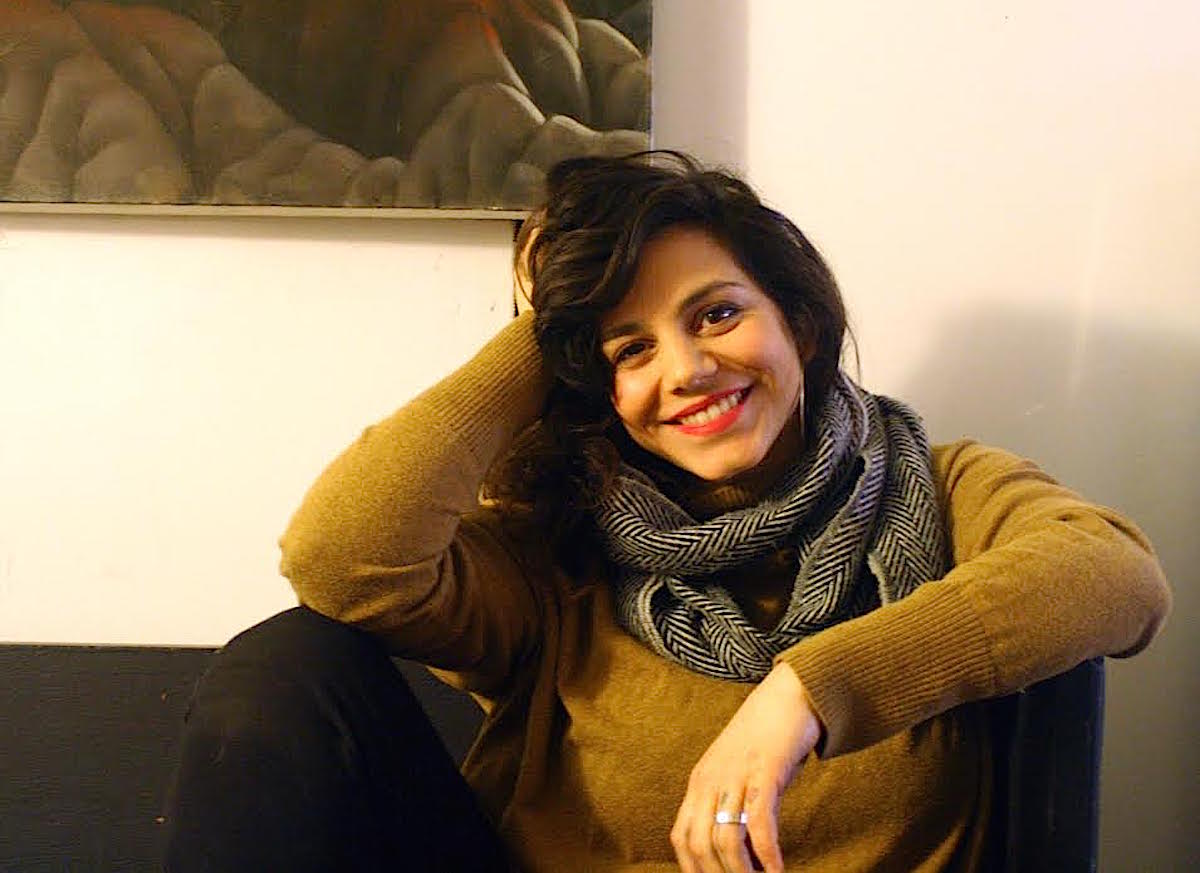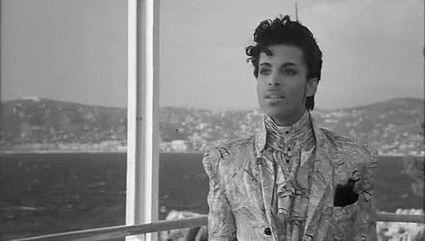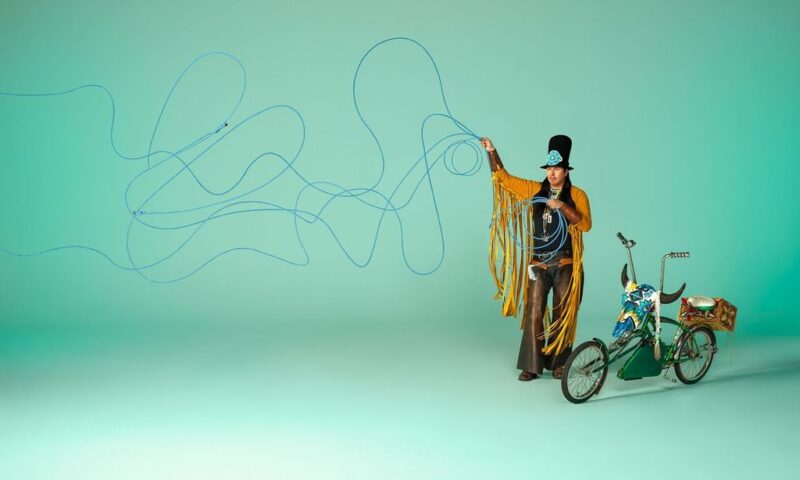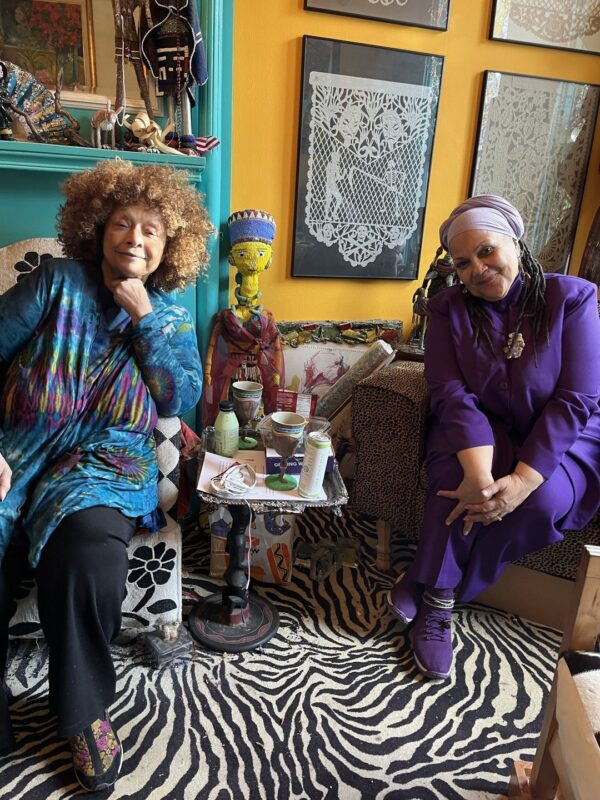The Death of Prince and the Power of Great Art by Cara Ober
I didn’t think I had it in me, but Purple Rain came on the radio and I lost it. Blubbery sobs and gushing tears exploded out of nowhere.
Thanks to WTMD, I wept up and down Charles Street this morning, blasting purple guitar wails at other cars, construction men, pedestrians and small dogs. Where did all this emotion come from? Although I have been a huge Prince fan for decades, proudly karaoke-ing Little Red Corvette whenever possible, I’m not one to cry over the death of someone I’ve never personally known.
Was I was crying for the man, the Artist formerly known as Prince, or for something else? It wasn’t just the loping guitar riffs, mournful and romantic, that socked me in the gut. The song conjured up a visceral scene of my teens and early 20’s, and it all flashed before me. This song, and others by Prince, were the soundtrack of my first kisses, slow dancing in city parks late at night after curfew, impromptu cover singalongs in bars, and and countless jukebox dance parties. It’s not like I was expecting to relive these moments of my life again, or that I even want to, but with the death of Prince, these memories are somehow sealed. I can still love this music and make new memories with it, but they are now also a part of the past.
Besides crying nostalgic tears for my own loss, I found something deeper in my emotional reaction. I don’t know what else to call it except the power of the artist, the power of great art. Like David Bowie, Prince and his music were a lifeline to millions of people. Both made experimental pop songs so fucking good that they made it okay to be a freak, to embrace your inner weirdo and even put it in the public eye. In the 1980’s culture of heteronormative protestant big hair and Little House on the Prairie puff sleves, this is nothing short of a miracle.
In an uptight culture full of ‘Just Say No,’ Prince’s music was achingly catchy yet in-your-face nasty. Let’s be honest – much of Prince’s music is about fucking. And we’re not talking about politically correct, missionary position, maritally sanctioned sex. We’re talking raunchy sex in cars with random strangers carrying used condoms – I mean, what is that?? His songs embrace a sexuality that was open, curious, and unapologetically freaky. We loved him for this, but how did he get away with it?
Instead of incurring a Robert Mapplethorpe-esque moralistic boycott, Prince’s music thrived. It infiltrated high school proms and Top 40 radio stations. It snuck into covers by all sorts of famous musicians and it’s been ubiquitously blasted in dance halls across America.
The man was just under 5 feet tall and wore the highest heels possible on a regular basis. He embodied the eccentric persona of the artist, saying and doing outlandish things– but not for attention, out of authenticity. Prince appears to have really been the person he acted like in the spotlight, fearless and devoted to his own artistic whims, no matter how decadent or weird or seemingly shallow. Along with a rare talent for songwriting and a holistic dedication to craft, Prince’s persona and the art he created place him outside the range of famous musical artists of the era. Like David Bowie, Prince’s songs belong to a very small cannon of ‘Great Art of our Time’ and I’m trying to figure out exactly why.
What makes art great, rather than merely entertaining? What makes art revolutionary? What makes art take hold across cultural boundaries? How does it creep inside our bodies and our memories and live with us? What does Prince teach us about making great art?
No Compromising.
First of all, there are no compromises in Prince’s work. His lyrics are downright weird and nasty and they often don’t make any logical sense. His songs don’t seem to come from his brain, rather they emanate from his body or his unconscious. He said that he wrote Little Red Corvette in between naps, that it came to him in bits as a dream and he simply copied it all down. Prince was so devoted to his art, someone who believed so completely in it, he seems to have been able to follow it purely and without answering to anyone. He gave zero fucks about anything but the work itself and his music was weirdly unique as a result. I personally hate the cliché of the artistic genius, but for Prince, the title applies.
Universal Communication.
Greatness in art also comes from its ability to communicate in a number of different modes and languages. It needs no explanation or introduction. It operates conceptually, physically, and emotionally. Prince’s songs speak to the whole body, so your fingertips feel it one way, your ears another way, flushing your body with heat, your ass shaking (shakin’ that ass… shakin’ that ass…), waking up your erogenous zones and curling your toes. Prince’s songs are sensual, soulful, personal, emotional, and smart. They directly and powerfully demand your attention.
Staying Power.
Like the best art of our time, Prince’s music envelops and includes you while also confusing your mind and scrambling your thoughts. His song stays with you long after it’s done. You find yourself humming the tune days later, doing a little dance without even realizing it, but also feeling a ‘Wait a minute – WHAT WAS THAT?’ challenge too.
Marriage of Concept and Medium.
Great art requires the medium and the concept to be synonymous, for the artist to be fluent in both simultaneously, for there to be no better options for expression. You can tell the artist loved his medium and that it was the exact mode for him to communicate through. It was purposeful. It was elegant. It was impossible to ignore. It was the act of an artist in love with the act of creating, and a negotiation between the artist and the medium. Prince made films as well as art, and they’re beautiful and silly and sexy and weird, but they’re not great art the way his songs are.
Stealthy Infiltration.
Great art infiltrates popular culture and it travels. It can appear innocuous or lighthearted, but once it takes hold it has staying power. You can brush it off mere pop if you want, but danceable pop music was a highly effective vehicle for Prince, not a limitation. It reaches you at moments when you least expect to feel a deep connection, (Super Bowl Half Time Show? Hello?) and makes you squirm and emote and remember vividly.
Getting Away With It.
Great art addresses cultural taboos, breaks boundaries, and gets provocative with current issues. It’s naughty. Consider Michelangelo painting the Sistine Chapel ceiling sneaking in homoerotic nudes, knowing that the Pope can’t touch his ceiling. Prince’s unabashed obsession with sex, especially casual sex and group sex, was revolutionary at the time and still is. His dirty lyrics fly in the face of America’s puritanical values, actually taunt them with purposeful nastiness, and he gets away with it because the songs are so damn good.
Challenge to Long Held Cultural Beliefs.
Great art challenges long held theories and notions, philosophies and belief systems. Prince’s music successfully challenges the commonly accepted idea of mind-body dualism, started with pre-Aristotelian philosophers and solidified in the 17th century with René Descartes. As surely as it speaks to ours, Prince’s music comes from his spleen, his penis, his hips, his heart, his liver, and his brain. The ability to communicate and connect so effectively is rare.
The fact that those magical organs and the person they make up are no longer alive in the world doing their thing is disheartening. Prince, the Artist, the Artist formerly known as Prince, and Prince Rogers Nelson, it is appropriate that you have four names. You will be missed and your work will endure.
Author Cara Ober is Editor at BmoreArt.






